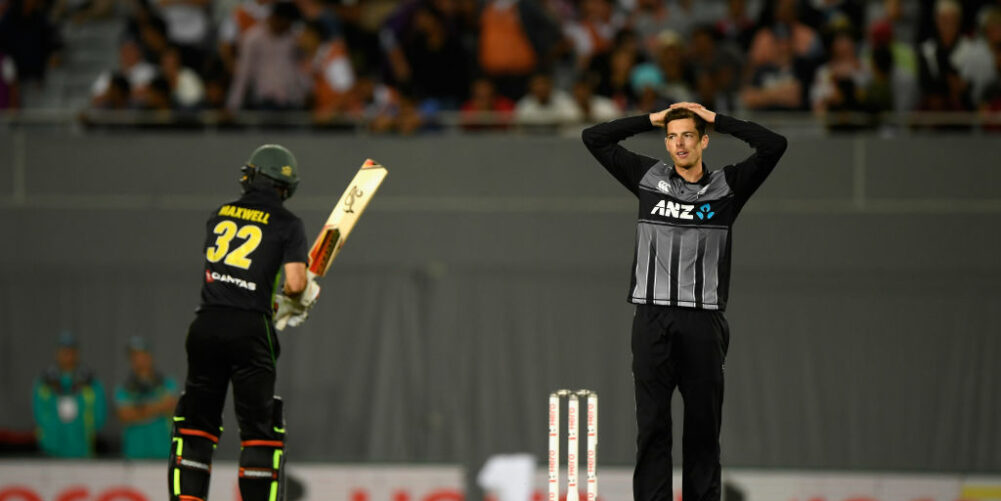Cricket’s schedule is a mess. There is too much cricket that means too little. Players are burned out. Fans are too often left short-changed, watching teams whose best players are knackered or injured.
It is time for change.
None of this is remotely controversial or outlandish; nothing more, indeed, than a statement of what has been very obvious for half a decade or more. All of this led to Trevor Bayliss’s suggestion that Twenty20 internationals should be virtually scrapped, restricted to the World T20 and the months preceding it.
Suggestions to rectify cricket’s bloated schedule are welcome. It is just that Bayliss’ prescription would not make things better; rather, it would make them much much worse – and actually exacerbate the problems it is intended to solve.
What would happen if there were no T20Is outside of the months before a World T20? National governing bodies would be able to generate less cash – not such a problem for Australia, England and India, perhaps, but a rather different matter beyond the sport’s economic big three.
With less cash, it would be even harder for other countries to be able to pay their players a competitive wage, and stop the flow of cricketers choosing domestic T20 leagues over international cricket. That means that more countries would go the same way of the West Indies, and have their talent pool hollowed out by crude market forces.
Indeed, look at what’s happened to New Zealand in recent years. Aged only 34, Brendon McCullum quit international cricket two years ago; without the lure of T20 leagues – where he has proved that he is still good enough to play international cricket with the white ball – McCullum would surely have played for longer, and ensured that one of world cricket’s most thrilling talents was not lost to the international game.
Late last year, Mitchell McClenagan asked to be released from his New Zealand central contract prematurely so he would be free to play in T20 leagues whenever, wherever – embodying how, even for non-elite players, greater riches can be earned in domestic T20 than international cricket.
And then there are players who are at their best in T20 – like New Zealand’s brilliant opener Colin Munro, or England’s Chris Jordan. If T20Is were virtually culled, they would not have a platform to showcase the best of their talents on the international stage. They would be encouraged to play more T20 – which many cricketers don’t just find more lucrative, but also more fulfilling and more fun – even if it meant giving up on international cricket altogether.
Getting rid of T20Is would also be disastrous for the sport’s globalisation. Shorter formats give weaker teams more chance of closing the gap. Even more importantly, T20Is also provide a way of popularising the sport in emerging nations, and making the sport more popular.
It would be perverse if international cricket let domestic leagues have a monopoly on the sport’s most popular format. That would give domestic leagues even more power – and ultimately risk leaving international cricket the preserve of those not good enough to play full-time on the domestic T20 circuit.

With ever-more money in domestic T20 leagues crude economics would leave the international game depleted. Any notion of Test cricket remaining the best against the best would be destroyed for good.
Of course, none of this is an argument for protecting the status quo. Rather it is an argument that T20Is need reform.
In their current guise, T20Is lack context and meaning, and seldom feature two full-strength teams, which should be fundamental to the very essence of international cricket.
It is time for change. T20Is need to be part of a proper league structure at international level. While the ICC has introduced a 13-team ODI league, from 2020, for the best international sides, there is no equivalent for T20Is, which is perverse. Alternatively – using T20Is as a chance to globalise – there could be proper qualification introduced for the World T20, as in international football. Or there could be a series of groups of evenly-matched teams, with promotion, relegation and prestigious cash prizes – rather like the UEFA Nations League introduced in football. Anything to give T20Is meaning.
The paradox is that, for cricket fans rightly anxious about the growing domination of T20 cricket, especially after the recent decisions by Alex Hales and Adil Rashid to specialise in white ball cricket, it is actually T20 cricket that can help provide a solution.
A properly marketed and structured international T20 league system, in between World T20s, could generate more interest in international cricket, and help to ensure that the best players do not quit the international game prematurely.
If used properly, some cash from a new T20I structure could be siphoned off to re-invest in the Test game, and ensure that the best players remain involved in that too.
Culling T20Is may be a seductive thought. But it would do nothing to quell the growth of T20 cricket.
All it would ensure is the growth of club over international cricket – leaving national boards with even less control to shape the sport’s overall future.












